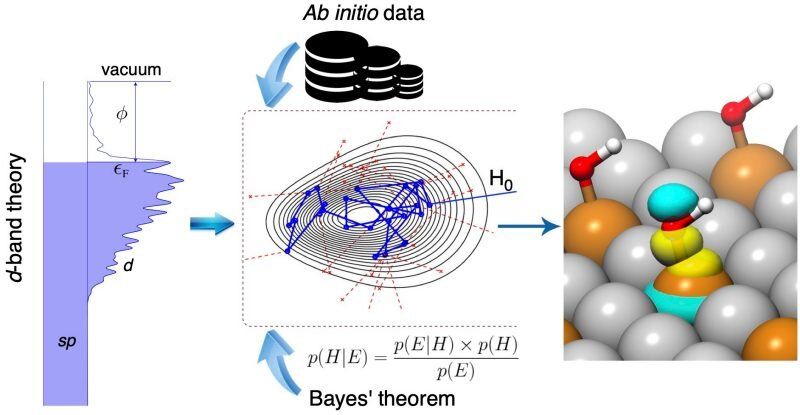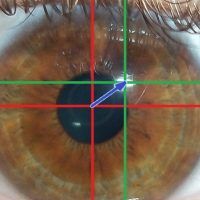The wars of the future will be fought by swarms of robots. Can we trust them to make the right decisions?




I have the honor of being a guest on the USTP Enlightenment Salon today, many thanks to Gennady and David for the invitation.
I was a Linux sys/net admin.
I was never interested in politics until it became IMPOSSIBLE to avoid. Every action or inaction is now a political statement in some people’s minds. That’s a terrible state of affairs that has been imposed on us. So I put my hacker hat on and went to work to discover why there exists an abject division on truth and morals and how politics became the catalyst for the phenomenon.
I’ll be discussing the roots of my theory: Physix, a mathematical model for thought and behavior. The political derivative is the Q-vote. It’s a novel approach to democracy.
Nell Watson (https://www.nellwatson.com/) will be using a derivative of Physix for machine learning and ethics on https://www.ethicsnet.org/, but I think the most interesting quality of Physix is it’s commercial value. It codifies the decision process: Q-Logic.
Every action or thought can be assigned one of 525 unique patterns on this 5×5 grid. 13,125 if you add voice. Economics, psychology, philosophy, religion, politics and every conceivable imaginary or spacetime event fits. Psychohistory. The matrix has been hacked.
Physix gives AI a finite vocabulary to analyze the infinite chaos of life and imagination. The patterns can be compared to both physical and psychological results, solve for the most preferred.
It’s odd to me that Youtube HASN’T thought of color ratings to highlight videos, Zoom could integrate it with their platform to rate conversations and for meetings. It could be used with any human interaction to rate quality of communication.
The key to real world solutions is that I present this as Open Source Human Nature. Free. Where there is commercial value derived, 10% of the profit/efficiency gained will go to a fund where the money will be spent 100% publicly and tracked (using the same polling system) over time to find the most efficient way to make people happy. I’m looking forward to working with the USTP on the political side, on the AI side Nell Watson is just dipping her toe in the water, I’m looking for a capable AI group to integrate the idea. David Kelley from what I can tell has done all the deep research, my idea is just a different tool to bring it together. I have a programmer, an investor waiting to hear from someone in the field to say they are interested in tackling this.
From all the interactions I’ve had, the USTP is the most progressive, rationally minded group I’ve found. I believe the people involved with this Party would be the best to understand the implications and help me navigate the shark infested waters of politics, NGO’s, Big Tech and Academia.
It’s a new world, AI has a new tool to analyze us and become an ally, this renders the current political paradigm an ancient, sclerotic remnant of brute force mass persuasion for power and money.
It’s time for a paradigm shift of consciousness, aided by AI. The USTP is uniquely suited to bring this to the political forefront.
USTP: Let’s go.

A new machine learning approach offers important insights into catalysis, a fundamental process that makes it possible to reduce the emission of toxic exhaust gases or produce essential materials like fabric.
In a report published in Nature Communications, Hongliang Xin, associate professor of chemical engineering at Virginia Tech, and his team of researchers developed a Bayesian learning model of chemisorption, or Bayeschem for short, aiming to use artificial intelligence to unlock the nature of chemical bonding at catalyst surfaces.
“It all comes down to how catalysts bind with molecules,” said Xin. “The interaction has to be strong enough to break some chemical bonds at reasonably low temperatures, but not too strong that catalysts would be poisoned by reaction intermediates. This rule is known as the Sabatier principle in catalysis.”

This article was published as a part of the Data Science Blogathon.
Introduction
Hi, In this article, let us go over how you can create a Python program using Convolutional Neural Networks (Deep Learning) and a mouse/keyboard automation library called pyautogui to move your mouse/cursor with your head pose. We will be using pyautogui as it is the simplest available Python library to programmatically control the various components of your computer. More details on how to use this library mentioned below.


The founder of a startup that helps cars drive themselves just became a billionaire — and he’s barely old enough to rent a car on his own.
Luminar Technologies CEO Austin Russell, 25, secured a hefty fortune after his company’s stock market debut this week. The Florida-based firm — which he founded when he was just 17 — makes so-called lidar scanners that use lasers to give autonomous cars a three-dimensional view of the road and what’s around them.
Luminar’s share price surged nearly 28 percent on its Thursday debut to close at $22.98, giving the company a market value of about $7.8 billion, the Wall Street Journal reported.

A 15-year-old Colorado high school student and young scientist who has used artificial intelligence and created apps to tackle contaminated drinking water, cyberbullying, opioid addiction and other social problems has been named Time Magazine’s first-ever “Kid of the Year.”
Gitanjali Rao, a sophomore at STEM School Highlands Ranch in suburban Denver who lives in the city of Lone Tree, was selected from more than 5,000 nominees in a process that culminated with a finalists’ committee of children, drinking water crisis in Flint, Michigan, inspired her work to develop a way to detect contaminants and send those results to a mobile phone, she said.
“I was like 10 when I told my parents that I wanted to research carbon nanotube sensor technology at the Denver Water quality research lab, and my mom was like, ” A what?” Rao told Jolie. She said that work ” is going to be in our generation’s hands pretty soon. So if no one else is gonna do it, I’m gonna do it.”

There is a renaissance occurring in the field of artificial intelligence. For some drawn-out specialists in the field, it isn’t excessively self-evident. Many are making against the advancements of Deep Learning is anyway an amazingly radical departure from classical methods.
Old style A.I. procedures has zeroed in generally on the legitimate premise of cognition, Deep Learning by contrast works in the territory of cognitive intuition. Deep learning frameworks display behavior that seems biological despite not being founded on biological material. It so happens that humankind has fortunately discovered Artificial Intuition as Deep Learning.
Artificial intuition is a simple term to misconstrue since it seems like artificial emotion and artificial empathy. In any case, it contrasts fundamentally. Scientists are dealing with artificial intuition so that machines can impersonate human behavior all the more precisely. Artificial intuition plans to distinguish a human’s perspective in real-time. Along these lines, for instance, chatbots, virtual assistants and care robots can react to people all the more appropriately in context. Artificial intuition is more similar to human intuition since it can quickly evaluate the totality of a situation, including subtle indicators of a specific activity.
Over the past decade or so, roboticists and computer scientists have tried to use reinforcement learning (RL) approaches to train robots to efficiently navigate their environment and complete a variety of basic tasks. Building affordable robots that can support and manage the exploratory controls associated with RL algorithms, however, has so far proved to be fairly challenging.
Researchers at Aalto University and Ote Robotics have recently created RealAnt, a low-cost, four-legged robot that can effectively be used to test and implement RL algorithms. The new robotics platform, presented in a paper pre-published on arXiv, is a minimalistic and affordable real-world version of the ‘Ant’ robot simulation environment, which is often used in RL research.
“The initial inspirations for our work were RL studies that successfully demonstrated learning to walk from scratch on ant-like quadruped and humanoid robot simulations,” Jussi Sainio, co-founder of Ote Robotics, told Tech Xplore. “The underlying premise with RL algorithms is that programming a robot to do tasks becomes much easier and more ‘natural’—one just needs to define the available sensor measurements, motor actions, then set a target goal and plug them all into a reinforcement learning algorithm, which figures out the rest.”